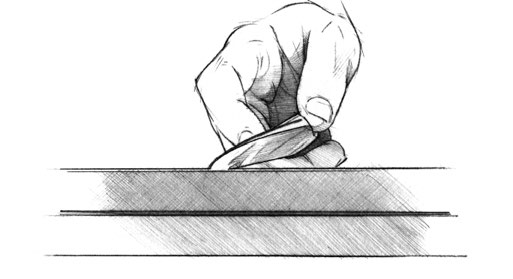How to use a whetstone
To sharpen your knife, you must slide the blade on the whetstone at a 22½-degree angle. There’s a trick to figuring out this 22½-degree angle. First, hold your knife straight up with the sharp edge of the blade resting on the stone. This is a
Next is the motion for the sharpening technique. Hold your knife handle in one hand, with your other hand resting on the side of the blade. Slide the knife, from the handle end of the blade to the tip, along the whetstone. Repeat this on both sides until your knife is sharpened. Again, learning the correct motion will take some practice.
While you can get a very sharp edge on your blade, it will never be as sharp as it was on the day it left the factory. You can come close to this edge. But the manufacturing process is too precise to be duplicated.










